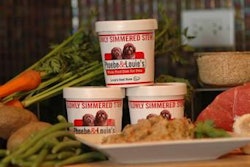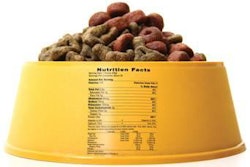Pet owners spent US$1.7 billion on grain-free petfood products at US pet specialty stores from September 2012 to September 2013, according to GfK (p. XX). That represents a 28% spike in sales at the 11,000+ US outlets tracked by GfK, which includes national and regional pet store chains and independent pet shops.
And that's just in one retail channel in one country; the grain-free trend is also zooming up the sales charts in other developed petfood markets, as well as in channels like the US mass market. Certainly these products have captured the attention and wallets of many pet owners, who seem to believe marketing claims that grain-free is how "pets would eat in the wild" or "nature intended dogs and cats to eat"-never mind that there is absolutely no scientific evidence backing up such claims.
"On the contrary, the available evidence indicates that dogs thrive on grain-containing, carbohydrate-rich, dry foods," wrote Anton Beynen, PhD, head of research and development for Vobra Special Petfoods and a leading researcher on the nutrient requirements of dogs. (See www.petfoodindustry.com/48374.html. He's speaking on a similar topic at Petfood Forum Asia 2014; see p. XX.)
Beynen didn't disparage grain-free foods; his point was that many types of formulations, with and without grains, can meet dogs' nutrient needs. Thus, he also debunked some arguments against using grains, which include that dogs are carnivores not designed to consume grains as part of their natural diet (that "as nature intended" claim) and that they cannot digest starch. "Grinding and cooking of grains destroys their structure and exposes the starch constituent for optimum utilization by dogs that are well equipped to digest high amounts of starch," Beynen wrote. And, "the notion of carnivore is not relevant for domesticated dogs fed by their keepers."
Further evidence against the "dogs are carnivores" myth came from a study reported in the journal Nature last year, in which researchers conducted whole-genome resequencing of dogs and wolves to show that novel adaptations allowed the early ancestors of modern dogs to thrive on a diet rich in starch. While the researchers noted the exact timing of dogs' domestication is a matter of debate, most sources point to it happening more than 10,000 years ago.
Of course, cats are obligate carnivores-they can obtain certain essential nutrients only from animal sources-but again, no scientific evidence shows that petfoods with grain are harmful or not nutritious for cats. (Most grain-free petfood sales are for dog food: US$1.4 billion of that US$1.7 billion total, according to GfK.)
Nevertheless, many consumers obviously believe grain-free foods are better for their pets, and petfood manufacturers and marketers are understandably responding to that demand (which they helped create) and riding the grain-free wave. Yet, another issue could be a threat not only to this successful trend (along with similar ones like low carbohydrate, low glycemic and "human grade" petfoods) but also to our industry's long-term health and prospects: Is the trend sustainable? Low or no grain usually means more meat and similar ingredients in the products, and petfood is already competing with the human food industry for meat and other protein sources as demand for meat grows globally.
You can learn more about these and related topics-nutritional sustainability of petfoods, petfood trends and sales patterns, new technologies and processes for high meat petfoods-at Petfood Forum 2014. See p. XX for information.
















